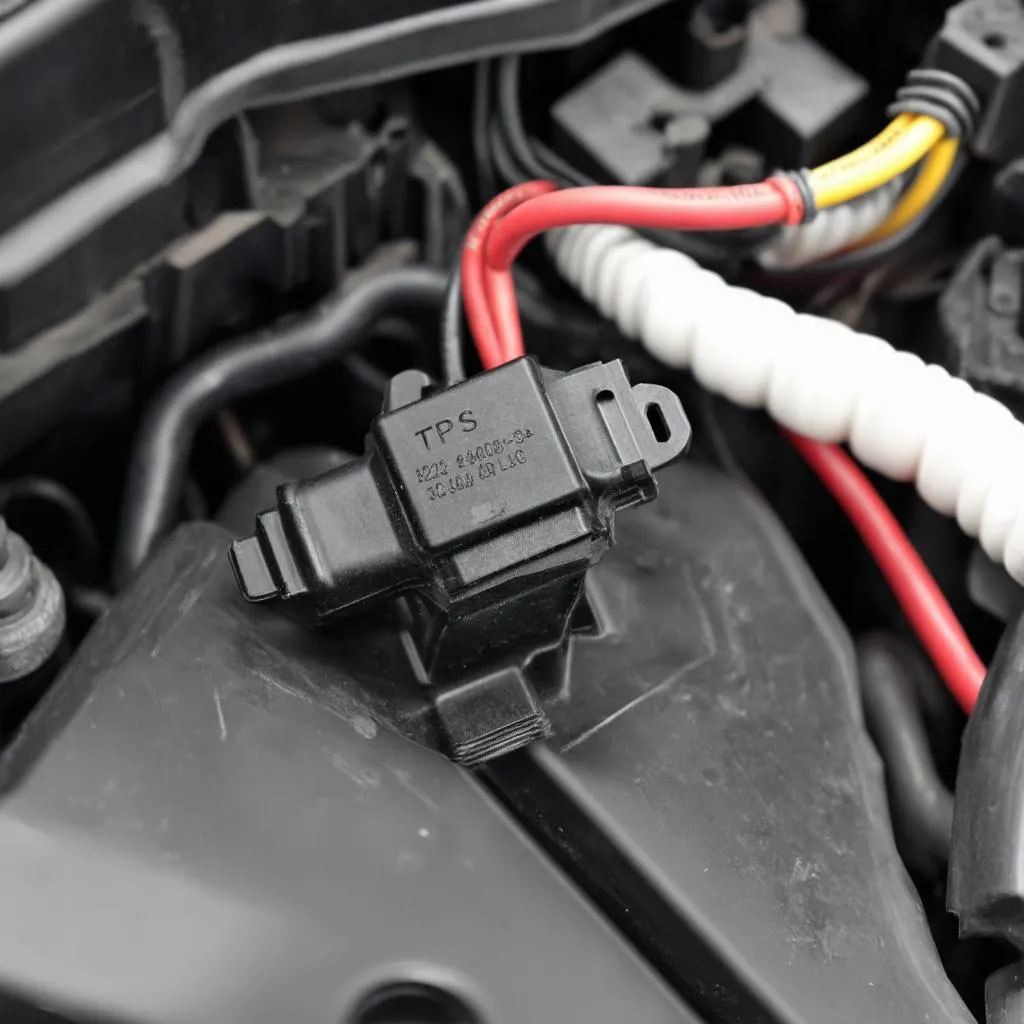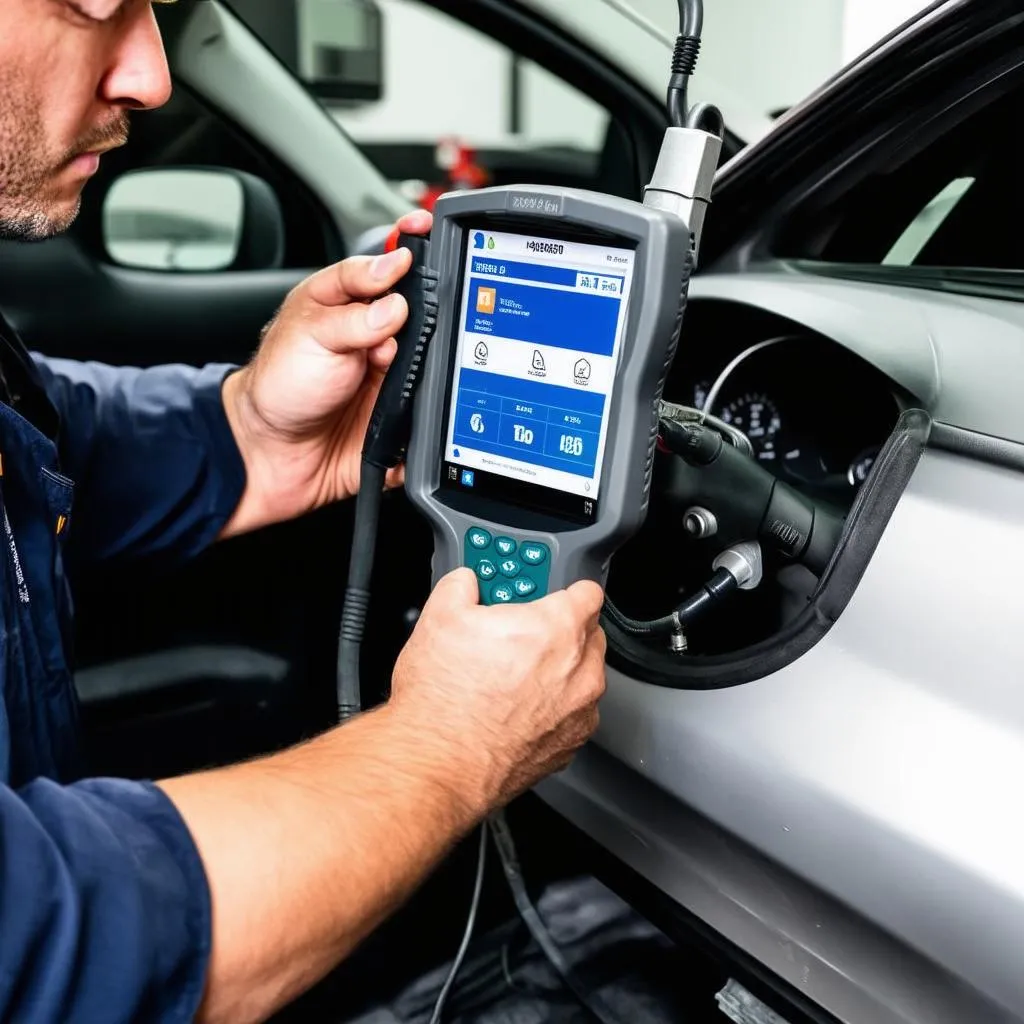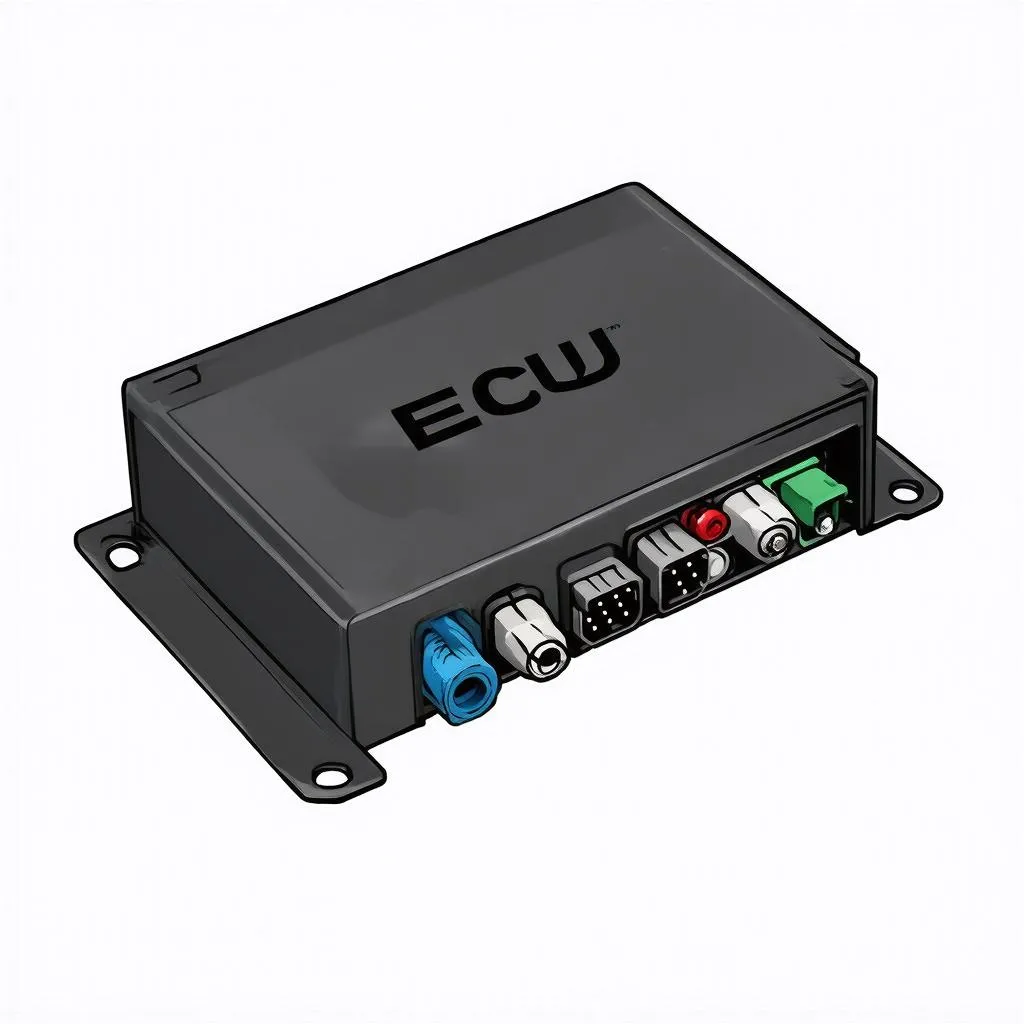“My car is acting up, and I keep getting this P0122 code. What does it mean? Should I be worried?”
This is a question many car owners ask themselves when faced with an unexpected code popping up on their dashboard. The Obd P0122 code signals a potential issue with your vehicle’s throttle position sensor (TPS), a critical component that governs your engine’s performance.
Understanding the Obd P0122 Code: A Deep Dive
The TPS: Your Engine’s Accelerator
Imagine your car’s engine as a powerful beast, needing precise instructions to harness its strength. The throttle position sensor (TPS) acts as the crucial intermediary between your foot on the accelerator and the engine’s control unit (ECU). It’s like a translator converting your commands into electrical signals the ECU can understand.
Think of it this way: When you press the gas pedal, the TPS senses the angle of your throttle plate (which controls airflow into the engine) and sends that information to the ECU. The ECU then adjusts the fuel injection and ignition timing to deliver the right amount of power based on your pedal input.
Why The P0122 Code?
This code signifies a problem with the TPS’s ability to communicate accurately with the ECU. It might be:
- TPS Malfunction: The sensor itself could be faulty, sending incorrect readings.
- Worn-out Wiring: Damaged wiring between the TPS and ECU can disrupt communication.
- Loose Connections: A simple loose connection can also prevent the TPS from transmitting data properly.
Troubleshooting the P0122 Code: Your DIY Guide
The Power of Observation:
- Notice the Symptoms: Pay attention to your car’s behavior. Is it hesitating when you accelerate? Does it run rough at idle? These are common signs of a malfunctioning TPS.
- Check Engine Light: A flashing or illuminated check engine light accompanied by a P0122 code is a definite signal to investigate further.
The Hands-On Approach:
-
Visual Inspection: Begin by visually inspecting the TPS and its wiring harness. Look for any signs of damage, corrosion, or loose connections.
-
Using a Diagnostic Tool: A dealer scanner designed specifically for European cars can help you gather critical data about your vehicle’s health. The scanner can access the TPS signal and compare it to its expected range.
-
Conduct a Simple Test: If you have basic electrical knowledge and a multimeter, you can test the TPS’s voltage output. This involves connecting the multimeter to the TPS terminals and then comparing the reading to the manufacturer’s specifications.
The Importance of a Professional Diagnosis
Remember: While this guide offers a basic understanding of the P0122 code, it’s crucial to consult a qualified automotive technician for a professional diagnosis.
Here’s why:
- Specialized Tools: Mechanics have access to professional diagnostic tools that can accurately pinpoint the root cause of the problem.
- Experience and Knowledge: They possess the expertise to interpret the data from your vehicle’s systems and make the necessary repairs.
- Safety and Performance: Incorrect repairs can potentially lead to further damage or unsafe driving conditions.
Additional Insights: Fuel Economy and Feng Shui
-
Fuel Efficiency and the TPS: A malfunctioning TPS can negatively impact your car’s fuel economy. If the TPS is not sending accurate signals to the ECU, it could cause the engine to run rich or lean, leading to increased fuel consumption.
-
Feng Shui and Your Vehicle: Some believe that a well-maintained car is essential for good Feng Shui. A car that is running smoothly and efficiently represents a positive flow of energy, while a malfunctioning TPS may disrupt this flow, leading to potential imbalances.
Frequently Asked Questions
What are some common symptoms of a P0122 code?
Common symptoms include rough idle, hesitation during acceleration, stalling, decreased fuel economy, and a check engine light illuminated with the P0122 code.
Can I drive with a P0122 code?
While it’s possible to drive with this code, it’s best to get it checked as soon as possible. A faulty TPS can impact your car’s performance and potentially lead to further damage.
How much does it cost to fix a P0122 code?
The cost of repairing a P0122 code can vary depending on the underlying issue and the type of car. Replacing the TPS itself might cost between $50-$200, while labor costs could range from $50-$150.
What other OBD codes are related to the P0122 code?
Other related codes include P0121, P0123, and P0125, all of which relate to the throttle position sensor or its circuitry.
Can I reset the P0122 code myself?
You can reset the code using a diagnostic scanner, but this will only temporarily clear the code. If the underlying problem is not addressed, the code will likely reappear.
Need Help? Contact TechCarUSA for Expert Assistance
If you are experiencing issues with a P0122 code or any other diagnostic code, don’t hesitate to contact TechCarUSA for help. We offer expert advice and support for European cars, ensuring your vehicle is back on the road and running smoothly. Contact us via WhatsApp: +84767531508.
Next Steps: Discover More
Want to explore other OBD codes or learn more about your car’s diagnostic systems? Check out these related articles on our website:
- OBD Code P0121: Understanding and Troubleshooting
- Decoding OBD Codes: A Comprehensive Guide
- Understanding OBD Codes for Your 2001 F250 7.3L
- 2001 Chevrolet OBD Code P0122: Diagnosis and Solutions
Let us know in the comments below if you have any questions or experiences with the P0122 code!
 Throttle Position Sensor
Throttle Position Sensor
 Dealer Scanner
Dealer Scanner
 Engine Control Unit
Engine Control Unit